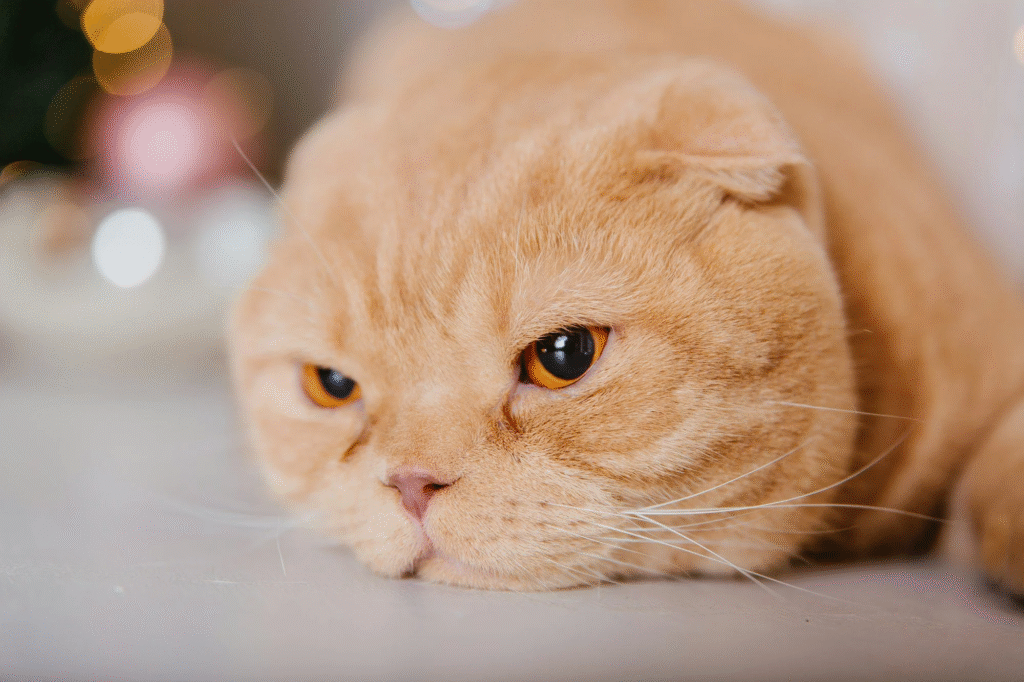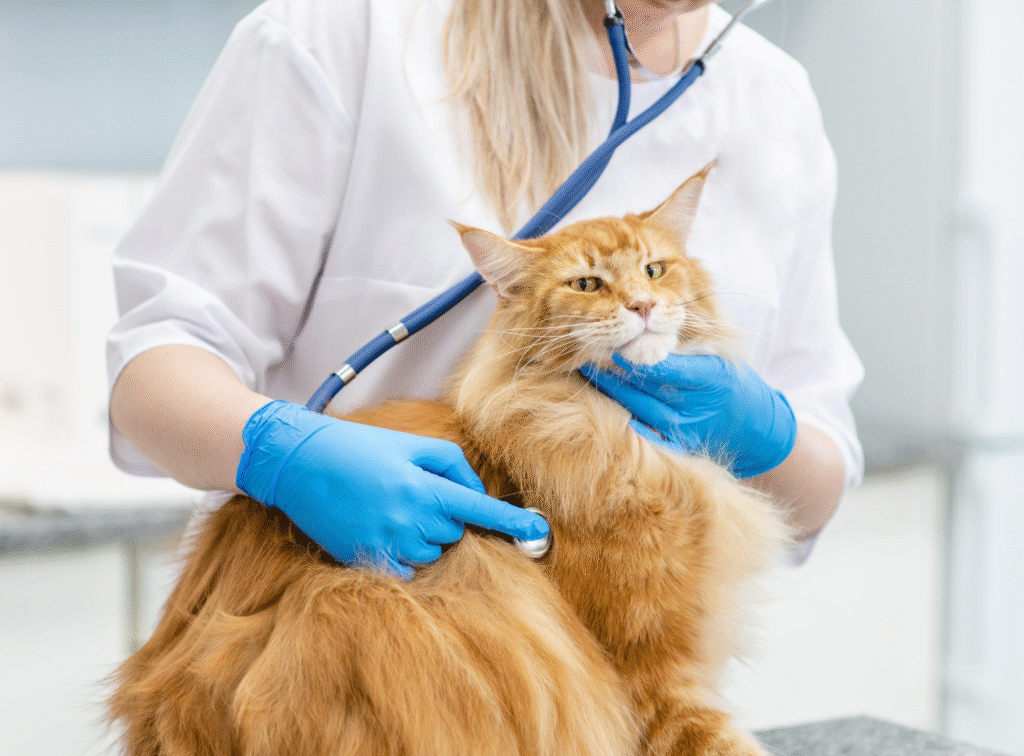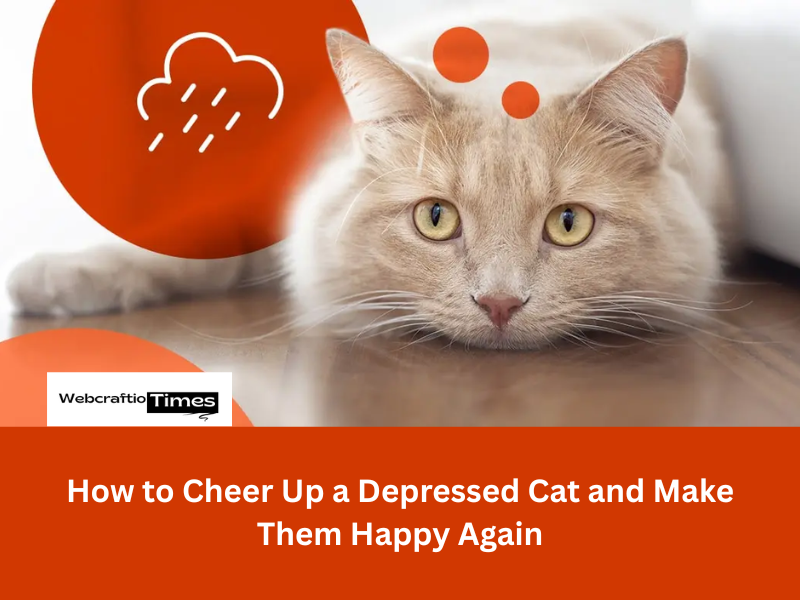Cats have emotions just like humans. Sometimes they lose interest in play or stop being affectionate. If you notice these changes, you may wonder how to cheer up a depressed cat. Understanding the cause and helping your cat feel safe again can bring back their joy and playful spirit.
Understanding The Reason For Depression
Cat depression often starts with changes in routine, environment, or companionship. Moving to a new home, losing a family member, or adding a new pet can cause sadness. A depressed cat may stop grooming, hide for hours, or eat less. These signs show emotional distress that needs attention.
Unlike humans, cats cannot express their feelings with words. You must read their body language and behavior. Notice if they sleep more than usual or avoid their favorite toys. These are clues that your cat needs comfort and care.
Read More: How to Cure Dog Depression? Dog Depression Remedies Tips
Why Cats Become Depressed?
Several factors can make a cat feel down. A sudden change in their surroundings can confuse them. Cats rely on familiar scents, spaces, and daily patterns. When those change, they may feel insecure.
Health issues also play a big role. Pain, infections, or thyroid problems can affect a cat’s mood. Always check with your vet to rule out medical causes before assuming it’s emotional.

Loneliness is another common reason. Cats form deep bonds with their owners. When they don’t receive enough attention, they may withdraw and act sad.
How to Cheer Up a Depressed Cat?
Now let’s look at effective ways to help your furry friend. The goal is to restore comfort, trust, and happiness.
1. Spend Quality Time Together
Cats thrive on attention. Dedicate at least 15 to 20 minutes daily to interactive play. Use toys that trigger their hunting instincts, like feather wands or laser pointers. These activities release endorphins that lift their mood.
Talk to your cat often. Your voice provides reassurance and stability. Sit beside them quietly if they don’t want to play yet. Presence alone can help a cat feel safe.
2. Create a Safe and Peaceful Environment
A calm home helps ease stress. Give your cat cozy spots to rest, such as soft blankets or cat trees near windows. Watching birds or sunlight can keep them entertained.
Add scratching posts and puzzle feeders to stimulate their mind. Mental activity reduces boredom and anxiety. Cats need both physical and mental outlets to stay happy.
3. Use Food and Treats Wisely
Appetite loss often signals depression. Tempt your cat with favorite treats or small portions of wet food. Hand-feed them gently to rebuild trust.
Avoid overfeeding though. The goal is emotional connection, not indulgence. Consistent feeding times can also create comfort through routine.
4. Give Them Toys to Play
Introduce new toys gradually. Cats love curiosity but dislike pressure. Rotate toys every few days to keep things interesting.
Hide treats in different spots around your home. It encourages exploration and activates natural hunting instincts. This activity can boost confidence and joy.
5. Give Them Personal Space
Sometimes your cat just needs quiet time. Never force interaction. Let them come to you when ready. Respecting their space shows understanding and builds trust.
Cats appreciate control over their surroundings. Provide hiding spots like boxes or covered beds. These safe zones help them relax and reduce emotional tension.
6. Keep a Consistent Routine
Cats feel secure when life is predictable. Feed, play, and cuddle at similar times each day. Routine gives them a sense of stability.
Avoid loud noises and sudden changes. If guests visit often, prepare a calm room where your cat can retreat. Predictability helps reduce emotional stress.
7. Bring in the Comfort of Scents and Sounds
Cats rely heavily on scent. Keep familiar-smelling blankets or clothing nearby. It reassures them of your presence.
Soft background music can also help. Classical or nature sounds work well. These sounds create a peaceful environment that promotes relaxation.
8. Visit the Vet if Needed
If your cat’s sadness lasts more than two weeks, schedule a vet visit. Sometimes depression hides deeper health issues. A vet can check for pain, illness, or nutritional deficiencies.

Professional guidance ensures your cat receives the right treatment. Early intervention often prevents long-term emotional problems.
The Healing Power of Patience and Love
Helping a Depressed cat takes time and empathy. Never rush the process. Each small improvement matters. Celebrate when your cat eats better, plays more, or starts purring again.
Remember, consistency heals. Your cat notices your care and patience. Emotional recovery becomes easier when love feels constant.
Final Thoughts on How to Cheer Up a Depressed Cat
Learning how to cheer up a depressed cat means understanding their emotions, habits, and comfort needs. Every cat deserves compassion and a stable environment.
Create daily routines filled with gentle play, affection, and calm spaces. Keep communication soft and positive. Small gestures like petting, talking, or offering a treat can rebuild trust and happiness.
A happy cat reflects a caring home. With patience, attention, and love, you can restore their joy and see their beautiful spirit shine again.
FAQs About How to Cheer Up a Depressed Cat
1. How to help a depressed cat?
Spend more time with your cat every day. Offer gentle play, comforting words, and a stable routine. Check with your vet to rule out health issues.
2. What are the signs of depression in cats?
A depressed cat may stop eating, hide often, sleep more, or ignore toys. You might also notice less grooming or less affection.
3. Can a cat recover from depression on its own?
Sometimes yes, but most cats need care and attention. Love, routine, and stimulation speed up recovery and help rebuild happiness.
4. How long does it take to cheer up a depressed cat?
Every cat is different. Some improve in a few days, while others may need several weeks of steady love and patience.
5. Should I take my cat to the vet for depression?
Yes, if sadness lasts more than two weeks or your cat stops eating. A vet can check for medical causes and suggest safe treatments.



